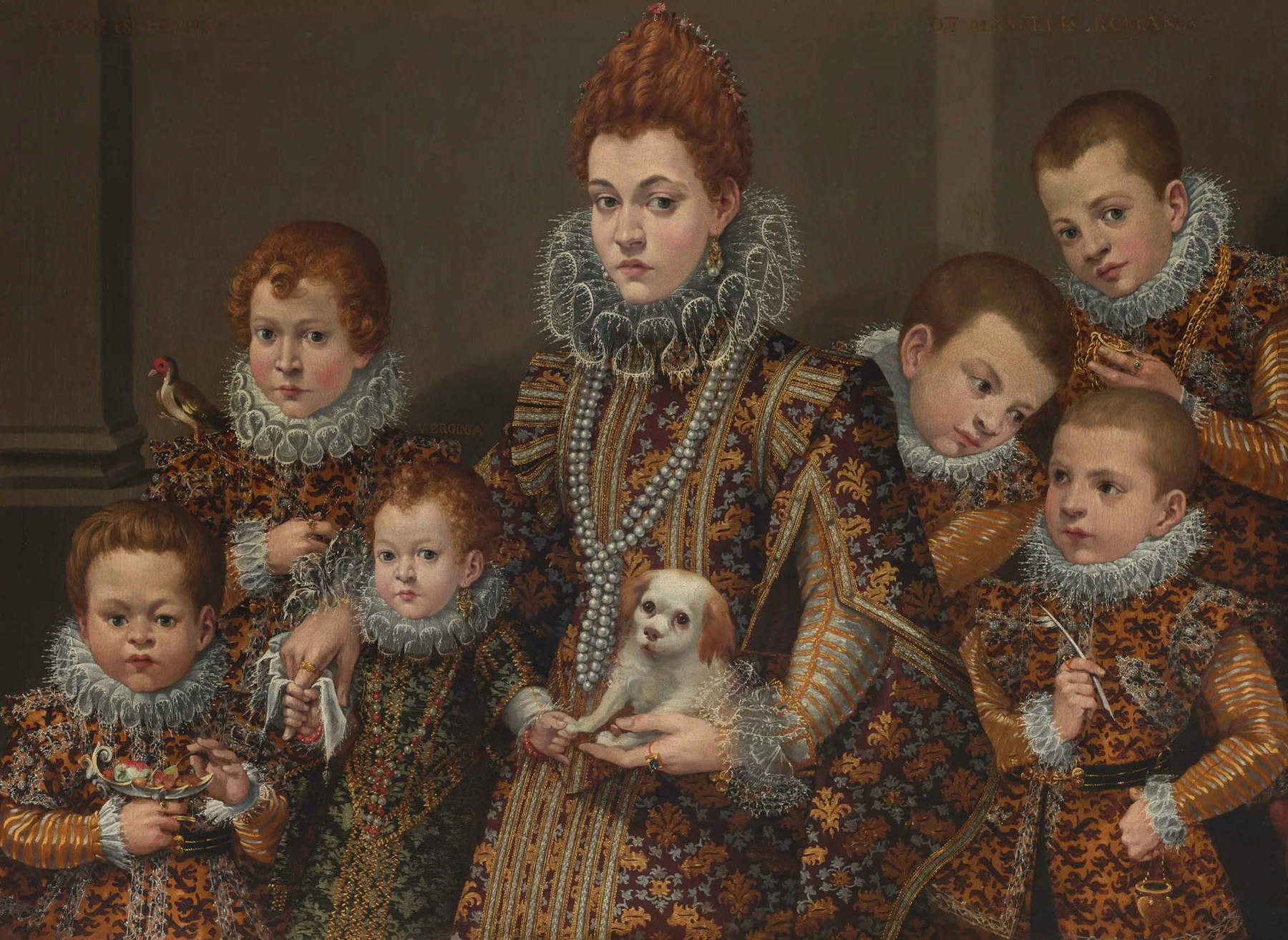A rare family portrait of Lavinia Fontana acquired by the Fine Arts Museums of San Francisco
Remarkable acquisition by the Fine Arts Museums of San Francisco , which on May 1 announced the acquisition of a significant work by Lavinia Fontana (Bologna, 1522 - Rome, 1614), the Ritratto di Bianca degli Utili Maselli e dei suoi figli, a rare and valuable family portrait, depiction of a mother with her children that demonstrates Lavinia Fontana’s skill in depicting elaborate clothing and jewelry as well as her models. The work has been in private hands for more than 300 years, and in San Francisco it is being exhibited for the first time in a public institution. For the U.S. museum, it is also the first work in the collection created by a woman before the 18th century.
Lavinia Fontana, a Bolognese, trained with her father Prospero Fontana, who had been a collaborator with Giorgio Vasari, knew her rise as an artist at a time when the women of Bolognese high society had more opportunities to participate in public life, including as patrons: these very women constituted Fontana’s main clientele, appreciated for the skill with which she could paint textiles and jewelry. One of these aristocrats was precisely Bianca degli Utili Maselli (1568 - 1605), who gave birth to as many as 19 children before dying from complications of childbirth at the age of 37. In Fontana’s portrait she appears with six of her children, probably the only ones still living at the time: five boys and one daughter, the little girl clutching her mother’s index finger. The frontal treatment of Maselli and his three children on the left contrasts, all with serious expressions, with the tender naturalism of his three children on the right, jostling and wiggling as children do.
The entire family is dressed in splendid clothes, with ruffs of expensive handmade lace and garments cut from the richest fabrics, shimmering golds, pearls glittering. The mother wears a diamond in her hand, and little Virginia, Maselli’s female daughter, has coral bracelets. The mother and daughter wear dresses of crimson and deep blue brocade, whose bold patterns, highlighted in precious metal-wrapped threads, form a striking contrast to the boys’ ochre juxtapositions of cut velvet. Each subject but one holds an accessory of some kind: a quill and inkwell; a gold medallion; a songbird on a leash; a silver bowl of figs; a faithful dog. These bore emblematic meanings, perhaps related to the individual personalities and virtues of the various family members: studiousness, gentleness, faithfulness, and so on.
Although the inscription along the top edge of the canvas identifies the family, the only model identified by its own inscription is Maselli’s young daughter, “Verginia.” Virginia Maselli survived to adulthood and in 1620 married Fausto Bartoli, by whom she had three children, including a girl Maria Felice, who married a member of the Marchetti family. And it was precisely the Marchetti family that remained owners of the painting for more than four centuries. This extended and unbroken line of inheritance has helped protect the canvas and ensure its optimal conservation conditions.
The acquisition of Bianca’s Portrait of the Utili Maselli and Her Children by Fontana was made possible by the generous support of Margaret and William R. Hearst III, the Lisa and Douglas Goldman Fund, John A. and Cynthia Fry Gunn, Dagmar Dolby and the Roscoe and Margaret Oakes Endowment Income Fund in celebration of the centennial of the Legion of Honor Building, the home of the Fine Arts Museums of San Franciesco. The painting was acquired through Ben Elwes Fine Art, London.

Statements
“Lavinia Fontana was one of the most interesting portrait painters of her time, and we are delighted to add this outstanding example of her work to our collection of Italian paintings,” said Thomas P. Campbell, Director and CEO of the Fine Arts Museums of San Francisco. “We extend our gratitude to the patrons whose generosity enabled us to make this transformative acquisition and to share this extraordinary image with visitors as we prepare to celebrate the 100th anniversary of the Legion of Honor.”
“The Portrait of Bianca degli Utili Maselli and her children is an unusually spectacular work: fascinating in subject matter, large in size, richly painted and beautifully preserved,” noted Emily Beeny, chief curator of the Legion of Honor and head of European painting. “It opens a window into the life of a Roman noblewoman and her family, marked by both privilege and sorrow. The two halves of the composition seem to reflect a tension in Fontana’s style between the glacial elegance of the Florentine Mannerist tradition and the warm-blooded pleasures of Bolognese naturalism.”
 |
| A rare family portrait of Lavinia Fontana acquired by the Fine Arts Museums of San Francisco |
Warning: the translation into English of the original Italian article was created using automatic tools. We undertake to review all articles, but we do not guarantee the total absence of inaccuracies in the translation due to the program. You can find the original by clicking on the ITA button. If you find any mistake,please contact us.





























